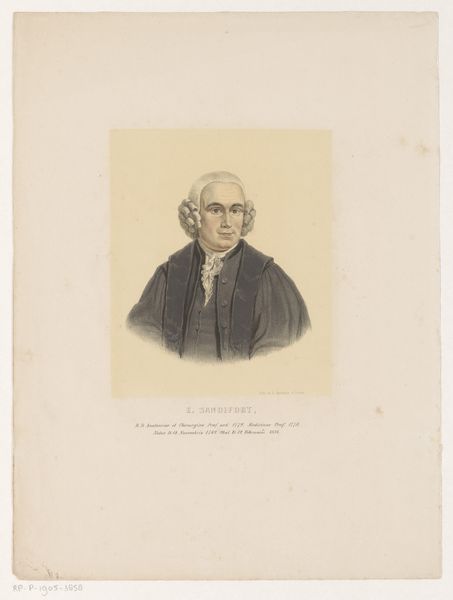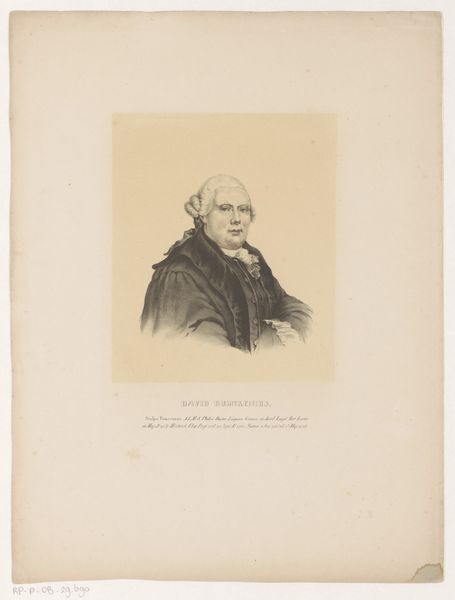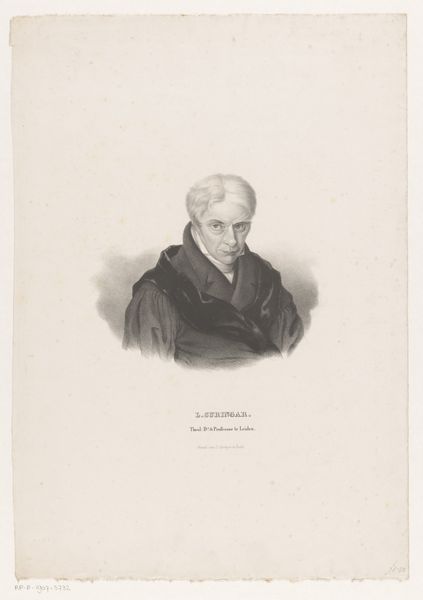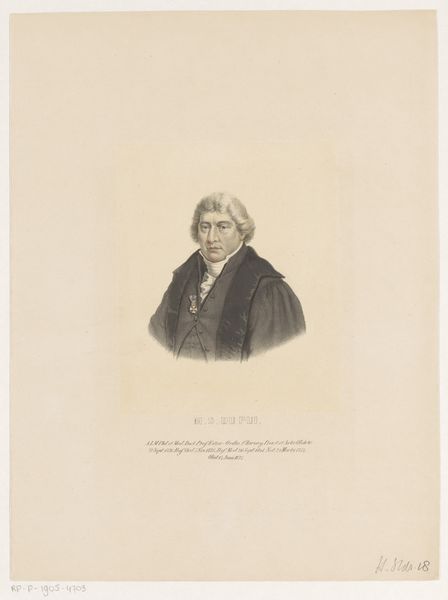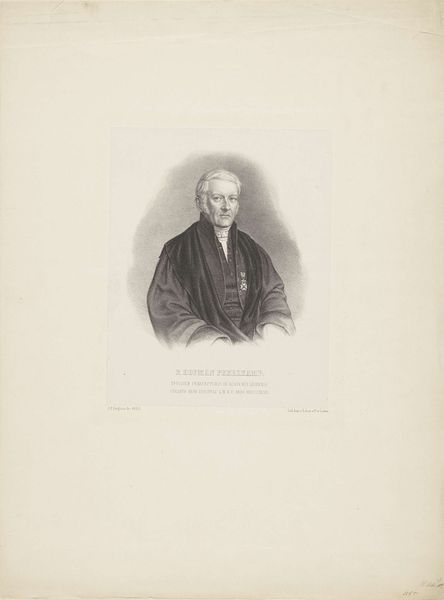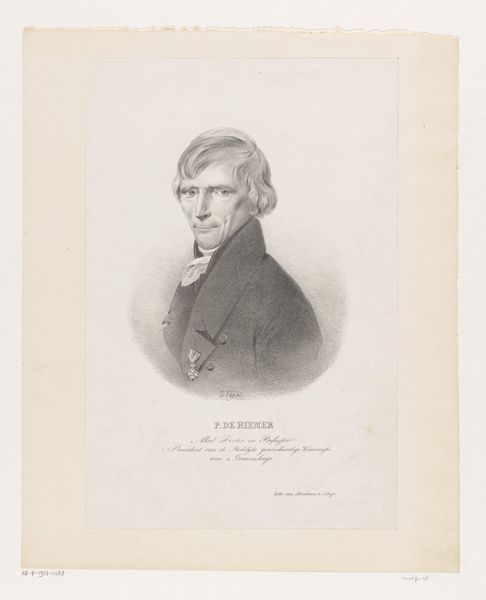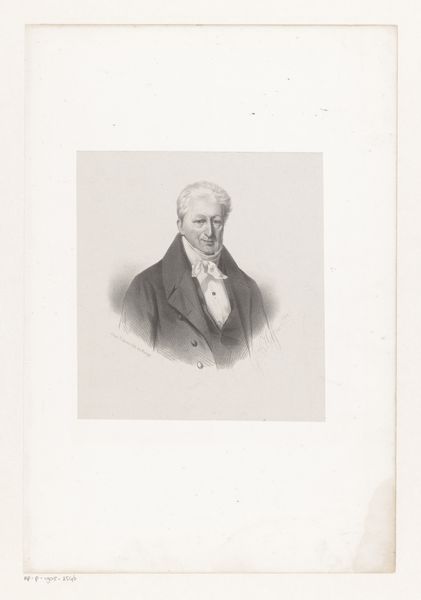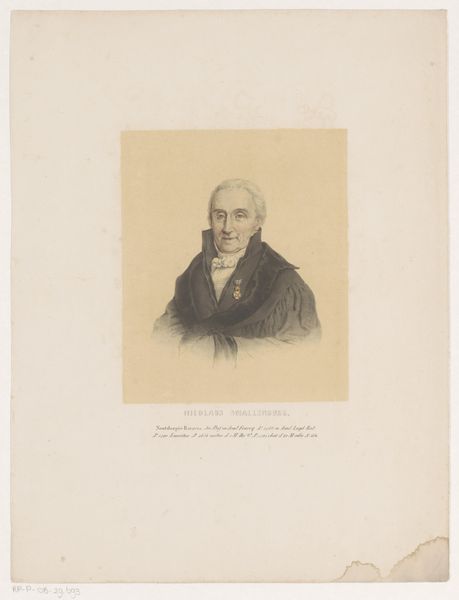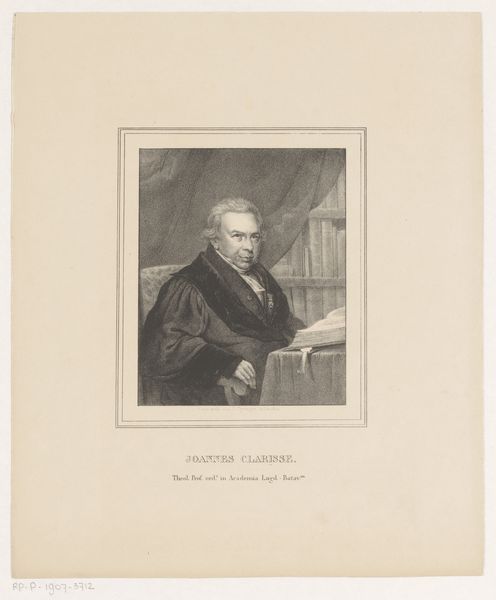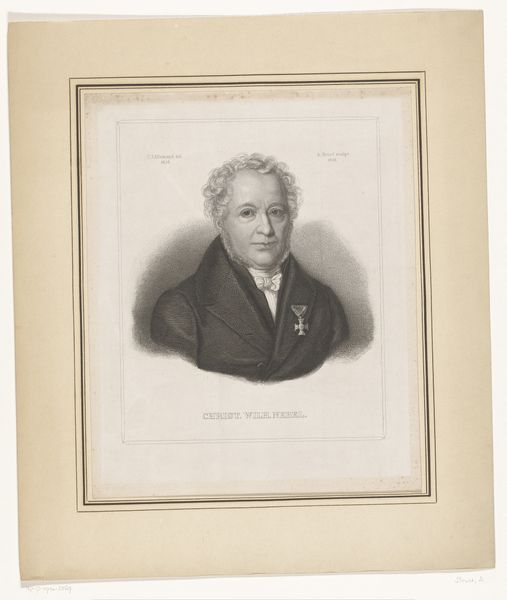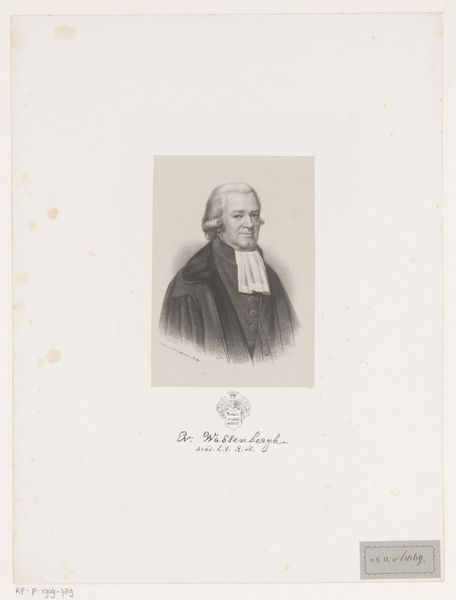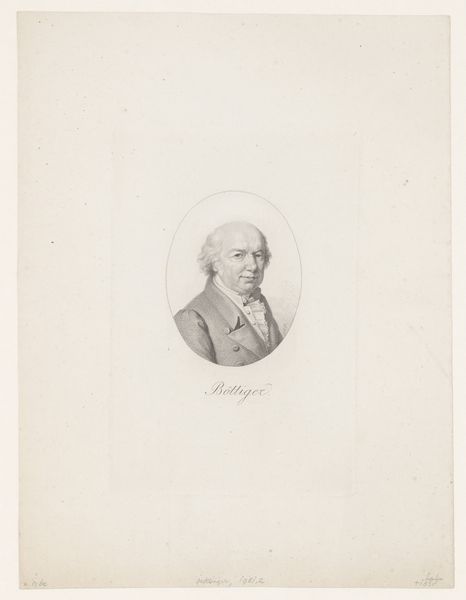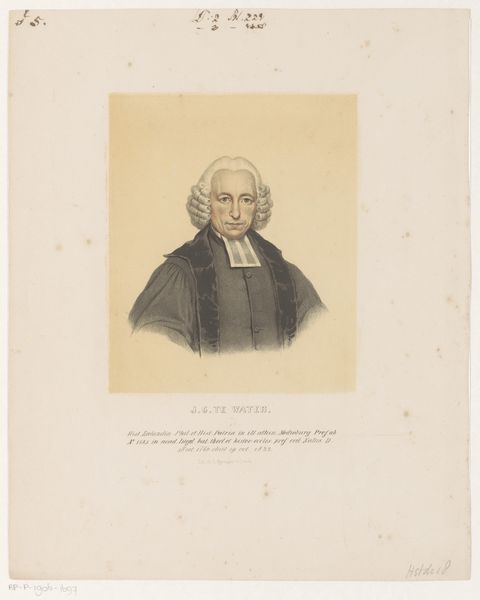
print, engraving
#
portrait
# print
#
engraving
#
realism
Dimensions: height 348 mm, width 259 mm
Copyright: Rijks Museum: Open Domain
Editor: Here we have a print dating back to around 1850, titled "Portret van Elias Annes Borger," created by Leendert Springer. It's an engraving, very detailed, depicting a man in formal attire. There’s something very proper and… institutional about it, even. What strikes you most when you look at this work? Curator: The social role of portraiture is key here. These weren't casual snapshots; they were carefully constructed images projecting status and respectability. Consider who Elias Annes Borger was likely to be – and therefore, who commissioned this piece. Did the work achieve its desired social effect? Editor: I suppose a portrait like this was a signifier. Looking closer, the detail in the engraving is quite remarkable for that purpose, really. What details strike you as deliberate? Curator: Absolutely, it's deliberate. The tight collar, the sober robe... these choices are not accidental. This image works to create a specific image in line with that role – intellectual authority, perhaps? It seems the image is an advertisement, not just an artwork. Editor: An advertisement... That’s an interesting point. Were such portraits frequently disseminated publicly? Was this a form of public relations? Curator: Exactly! Prints like these circulated. Consider their availability in public spaces – libraries, universities. Think about the audience and the message conveyed through repetition. Whose stories got told? Editor: I never considered it as a PR move before. Now I see it less as a personal memento and more as a piece of propaganda! Curator: Precisely. By viewing art as an integral part of a larger, powerful, cultural narrative, we may begin to see works in terms of propaganda, public promotion, as tools in complex social games. These can reveal hidden aspects of society and social standing in 19th-century Europe.
Comments
No comments
Be the first to comment and join the conversation on the ultimate creative platform.
